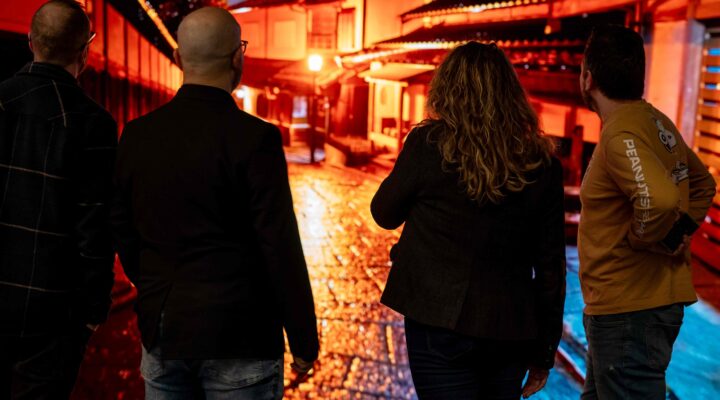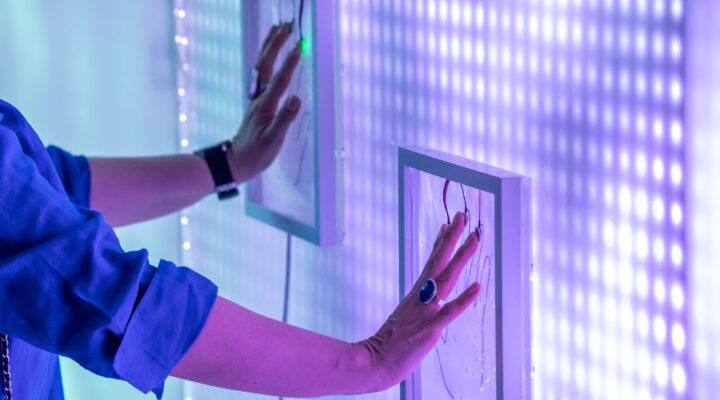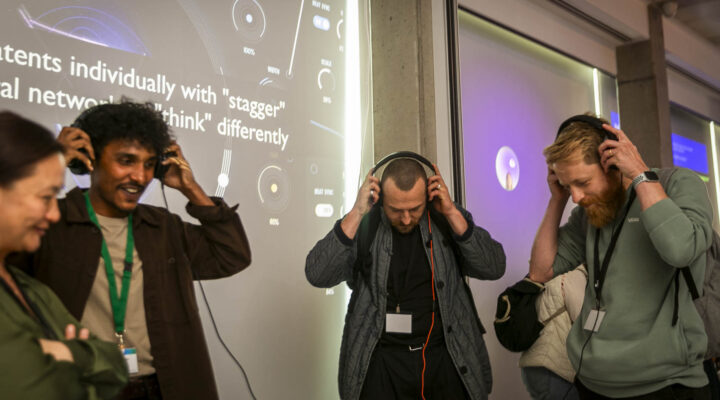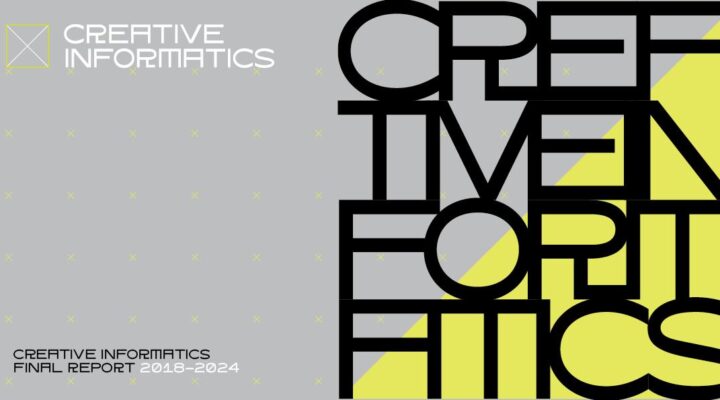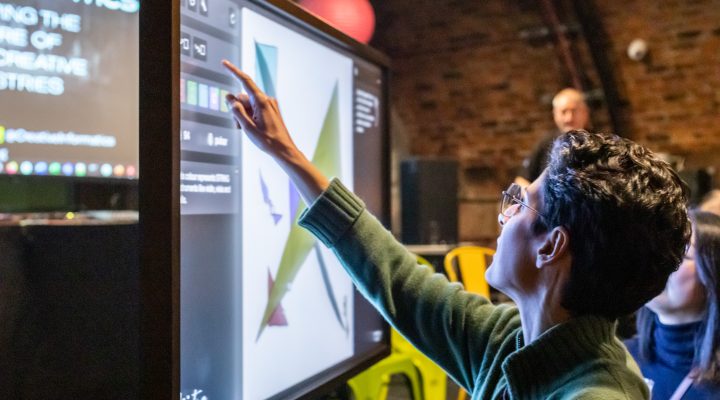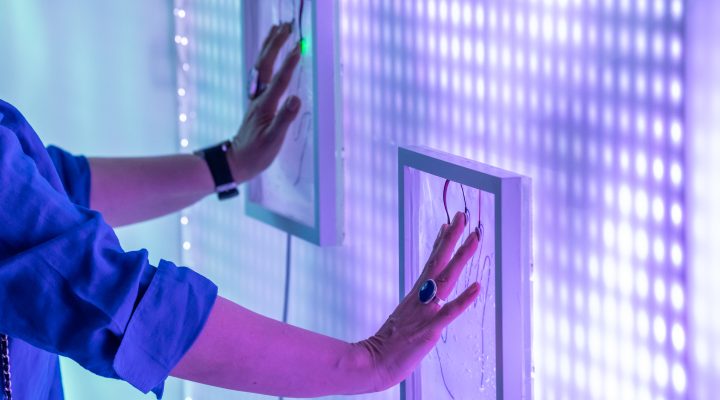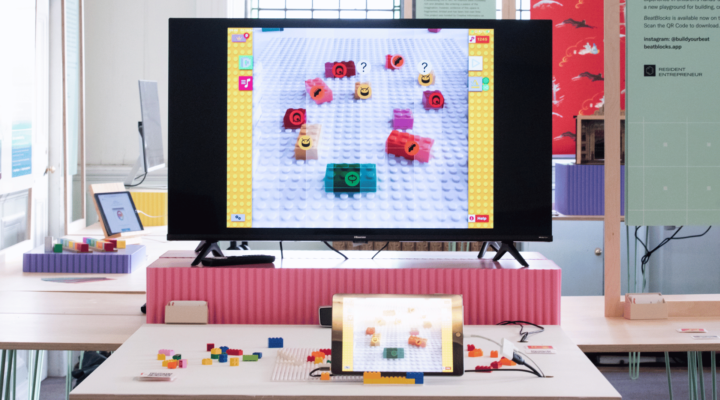
A Report from Creative Informatics
Reflections on the DISTANCE project (digital immersive technologies and craft engagement) that started with a Connected Innovators fund received by Applied Arts Scotland in early 2021.
NEWS | INGE PANNEELS 16 MARCH 2022
The purpose of Creative Informatics is to support the creative industries in the Edinburgh and the South of Scotland region in their use of data driven innovation (DDI), enabled in part through the disbursement of small research and development funds. Here we briefly touch upon a burgeoning project that started with a Connected Innovators fund received by Applied Arts Scotland for DISTANCE I (digital immersive technologies and craft engagement) in early 2021. The initial phase was defined by the geographical limit of Creative Informatics, but this test project was developed into a Scottish wide initiative, DISTANCE II funded by Creative Scotland which concluded in February 2022 with further plans for an international rollout. It is this cascading effect of small R&D interventions which deserves some attention as well as the innovative approach to collaboration taken with this project.
Access to physical spaces for creative production was made difficult or impossible during the international lockdown of 2020/21. The swift digital pivot of the creative industries in the wake of the pandemic highlighted possibilities in the use of online spaces for not only disseminating creative work, but to connect, share, collaborate and create. Whilst the adoption of online platforms such as Zoom, Teams and others enabled creatives to connect digitally in a virtual space, the DISTANCE project brought an added dimension by exploring how craft practitioners might be able to collaborate and create together, remotely. Craft practice is rooted in tactile interpretation of materials expressed through tacit, haptic processes. The DISTANCE project is a novel experiment in the use of immersive technology to enable dispersed craft practitioners to apply their haptic skills and material knowledge in digital immersive space, learning through remote collaboration. Whilst there are of course other technologies that enable remote collaboration using online tools, through file sharing of digital drawings for example, here the immersive technology of virtual reality enabled creative content creation and collaboration in a three-dimensional virtual space both in real time and asynchronous time. Collaborators could work together in the same virtual space at the same time or at different times when it suited them. In the words of one participant the ‘immersive technology allows you to break the rules’: it enabled craft makers to explore making without the usual physical boundaries of a material practice: no gravity rules, no limits to scale, no messiness and no carbon footprint implications of materials being procured and processed (acknowledging of course the digital carbon footprint). This ‘limitlessness’ was considered both an opportunity and a barrier when constraints can be useful as a framework to work against. Learning to use and understand this new technology required completely new skills, both haptic skills in terms of acquiring the tactile skills of handling the hand sets and head set but also the mental challenge of different ways of working and thinking. But unlike other creative technology, such as CAD, the immersive virtual reality tools offered a playfulness perhaps hitherto not experienced but which belies its origin in the gaming industry. It was clear that the ability to ‘play’ and experiment with this technology with low financial risk (the headsets were borrowed) did require an extensive investment of time to develop the necessary skills required.
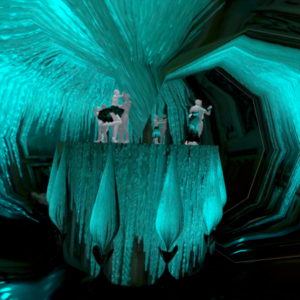
Transition Tango by Carrie Fertig, www.carriefertig.com
The recent democratisation of virtual reality through a marked decrease in purchase price has enabled more creatives to explore this technology. However, this has coincided with the adaption of the software (e.g. Tiltbrush, owned by Google) and hardware (e.g. Oculus Quest, owned by the Facebook company Meta) by tech giants. Whilst Google developed Tiltbrush in 2016 and made it open source in 2021, spurning the development of other software such as Multibrush and others, Oculus Quest was purchased by Facebook in 2014. This raises several known issues: open-source software is great for adoption and development by the community, but it also makes it risky. Immersive reality technology is evolving rapidly which makes this a field in flux and thus also risky for sole practitioners to experiment with as the technology may no longer be supported in the near future. The adoption of the technology by the large tech companies is thus proving critical in both lowering access thresholds and potentially providing stability longer term. It also, however, opens up ethical debates about the monopoly of these emerging technologies in the hands of tech giants, leaving small business little choice of where to source their software and hardware from. An Oculus Quest requires a mandatory Facebook integration and thus linked to a personal Facebook account with known issues around data tracking for example. There are alternatives but these risk being drowned out.
The DISTANCE project offered the craft practitioners an opportunity to explore, experiment and experience immersive digital technology as a means of connecting with others remotely, of creating work collaboratively and developing new ways of working. This was a collective learning project. It also highlighted the environmental potential for long distance collaboration for these remote and geographically spread craft communities across Scotland and extends the possibility of working with others creatively internationally, at a distance, without the need for physical travel. As such it is a valuable contribution in the exploration of alternatives ways of working when a Net Zero carbon economy is set to become the norm by 2030 and international travel may become too costly in terms of environmental impact. Additionally, it offers an opportunity for increased accessibility, for those for whom (inter)national travel might be difficult, e.g. for health reasons, caring commitments or due to the portfolio careers common in creative industries.
It is also worth reflecting on the value of a community of practice in a physical studio space, where haptic skills are paramount. A question going forward might be how immersive technology can integrate the embodied experience of making when the current focus is mostly audio and visual senses rather than haptic ones but where technology too is developing fast to include resistance and feedback loops to make the sensory experience more complete. What might this mean for material practices such as craft, design and architecture, where embodied material and haptic knowledge are fundamental to learning and acquiring skills? Furthermore, what different means of learning are offered by physical, hybrid and online spaces? It is perhaps timely to reflect on the longitudinal impact of the printing press and mechanical means of reproduction on creativity, which rather than burden it, expanded its repertoire and capacity. The printing press presaged the development of other media in the 19th and 20th century. So too the digital era of the 21st century has exponentially accelerated the technical abilities of production and dissemination. But it is clear that the role of the haptic (e.g. sense of touch) and the sensory ( non-touch) will become increasingly important. It might therefore be useful to pay attention to where and how creative practices steeped in these skills, such as craft, push the boundaries of technology to suit their particular creative needs and what this might reveal of the future of haptic skills. What is clear though, is that these small R&D interventions are highlighting new avenues through DDI in the creative industries that are worth paying attention to and are a model that deserves investment going forward.
DISTANCE project on the Applied Arts Scotland website.
Four podcasts by Creative Me podcasts reflecting on this activity.
